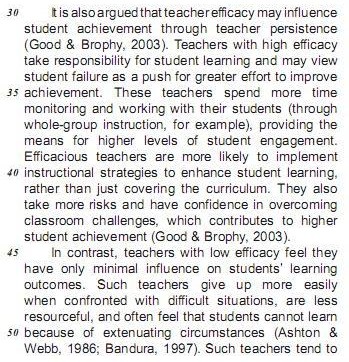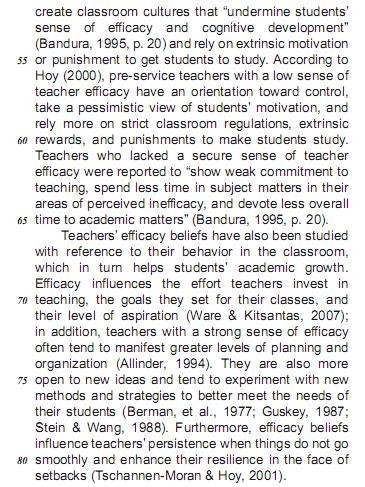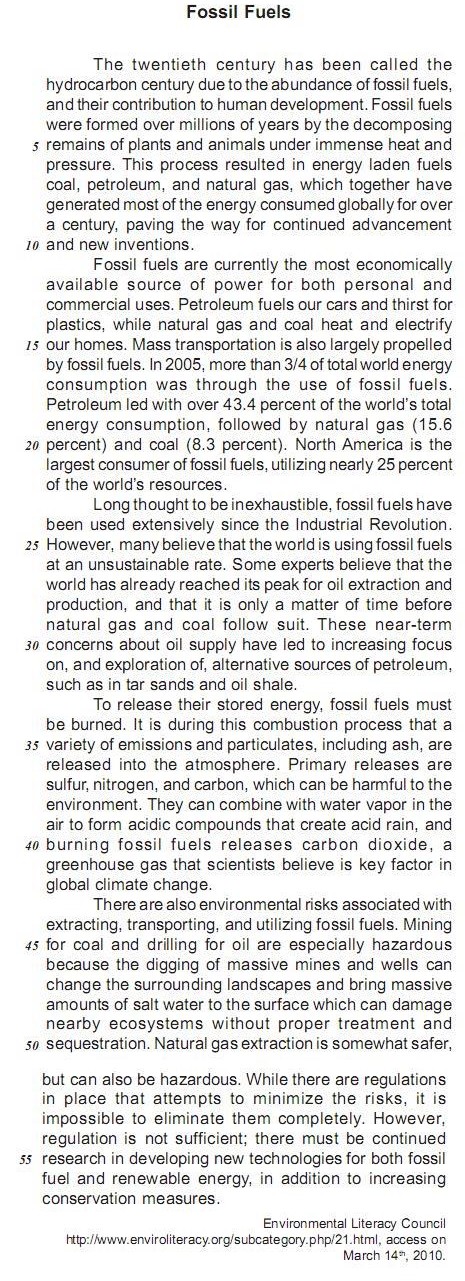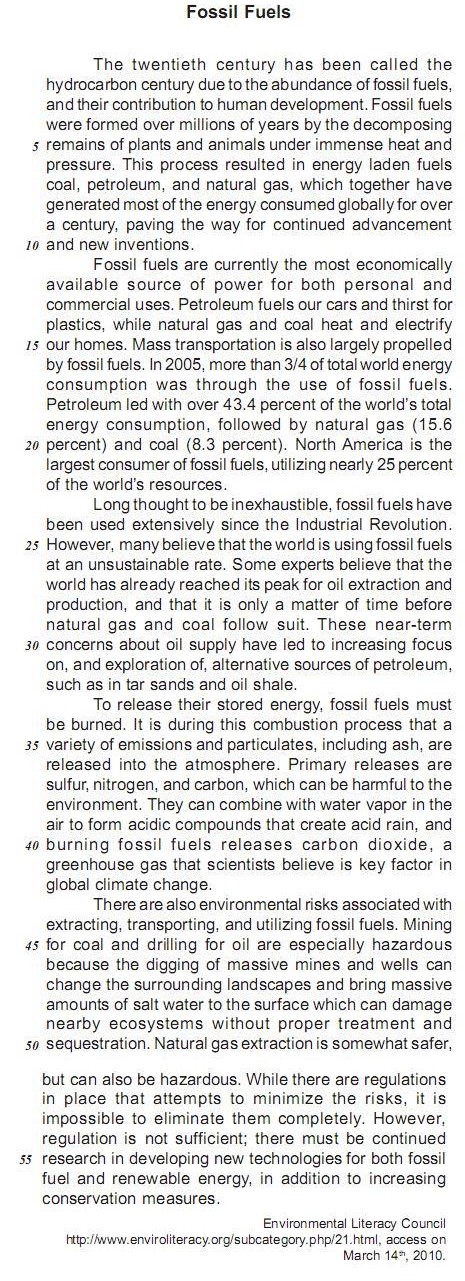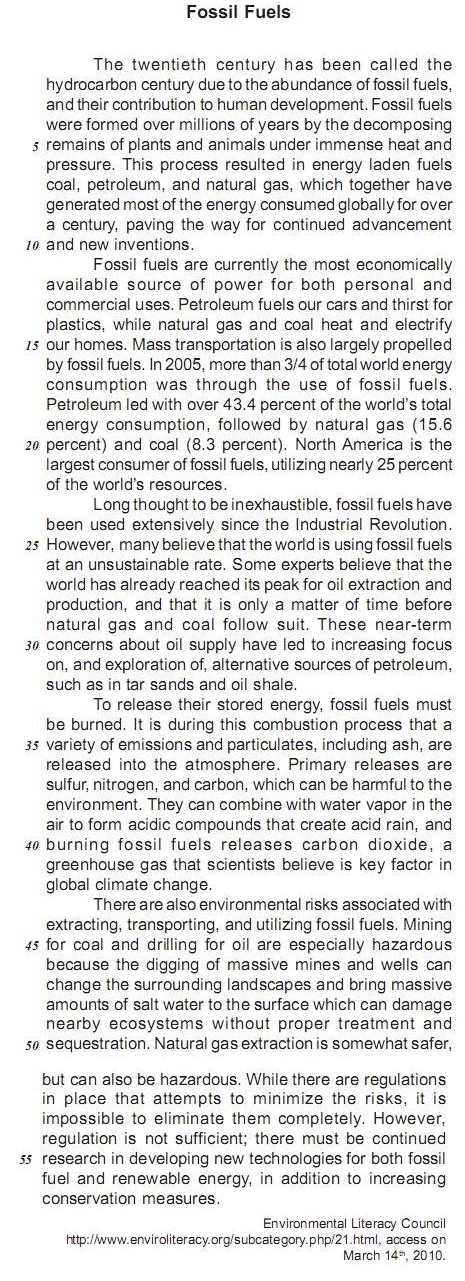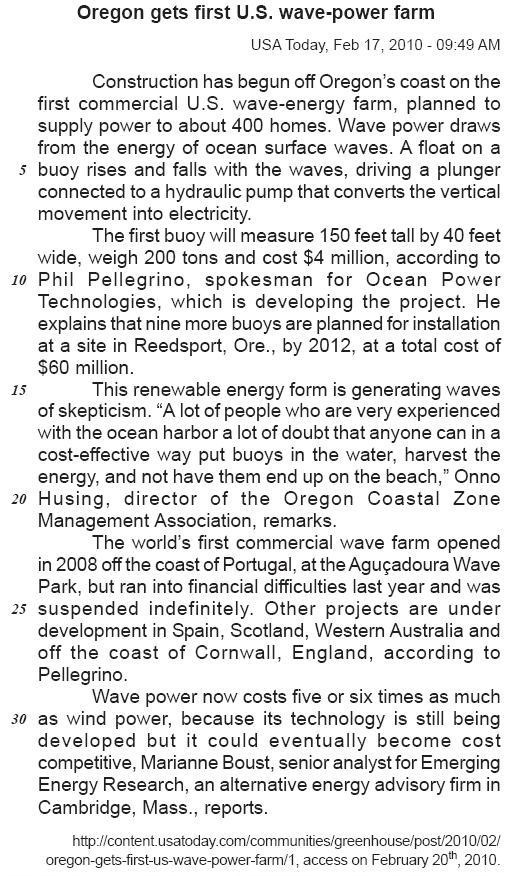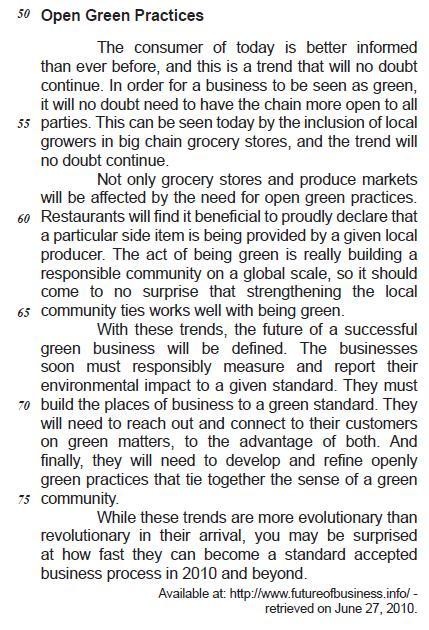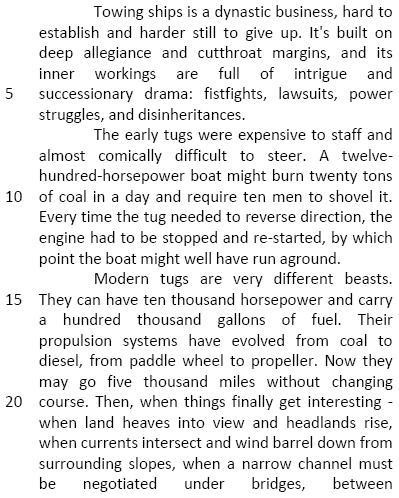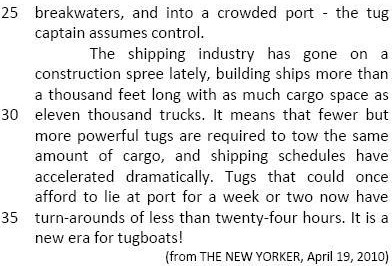The only characteristic that is typical of teachers with a low efficacy level is the capacity of
Among the solutions to minimize the risks associated with the use of fossil fuels, the author suggests the:
Identify the only statement about wave energy that is FALSE, according to information in Text 2.
The sentence "It may mean trying different prices for your newly developed gadget to see which price makes sales pop." (lines 72-74) implies that
According to the text, all the examples below are definable trends that will dictate the future of green business, EXCEPT
The fragment "to the advantage of both." (line 72) indicates that there will be
We are accustomed to thinking of military success as determined by quality of weaponry, rather than by food supply. But a
clear example of how improvements in food supply may decisively increase military success comes from the history of Maori New
Zealand. The Maori are the Polynesian people who were the first to settle New Zealand. Traditionally, they fought frequent fierce
wars against each other, but only against closely neighboring tribes. Those wars were limited by the modest productivity of their
agriculture, whose staple crop was sweet potatoes. It was not possible to grow enough sweet potatoes to feed an army in the field
for a long time or on distant marches. When Europeans arrived in New Zealand, they brought potatoes, which beginning around
1815 considerably increased Maori crop yields. Maori could now grow enough food to supply armies in the field for many weeks.
The result was a 15-year period in Maori history, from 1818 until 1833, when Maori tribes that had acquiredpotatoes and guns from
the English sent armies out on raids to attack tribes hundreds of miles away that had not yet acquired potatoes and guns. Thus, the
potato's productivity relieved previous limitations on Maori warfare, similar to the limitations that low-productivity corn agriculture
imposed on Maya warfare.
(Diamond, J. (2006). Collapse. London: Penguin.)
How did the arrival of Europeans change Maori warfare?
We are accustomed to thinking of military success as determined by quality of weaponry, rather than by food supply. But a
clear example of how improvements in food supply may decisively increase military success comes from the history of Maori New
Zealand. The Maori are the Polynesian people who were the first to settle New Zealand. Traditionally, they fought frequent fierce
wars against each other, but only against closely neighboring tribes. Those wars were limited by the modest productivity of their
agriculture, whose staple crop was sweet potatoes. It was not possible to grow enough sweet potatoes to feed an army in the field
for a long time or on distant marches. When Europeans arrived in New Zealand, they brought potatoes, which beginning around
1815 considerably increased Maori crop yields. Maori could now grow enough food to supply armies in the field for many weeks.
The result was a 15-year period in Maori history, from 1818 until 1833, when Maori tribes that had acquiredpotatoes and guns from
the English sent armies out on raids to attack tribes hundreds of miles away that had not yet acquired potatoes and guns. Thus, the
potato's productivity relieved previous limitations on Maori warfare, similar to the limitations that low-productivity corn agriculture
imposed on Maya warfare.
(Diamond, J. (2006). Collapse. London: Penguin.)
Why does the text mention the Maya?
According to lines 20 to 26, we apprehend that things finally get interesting when the land and headlands



